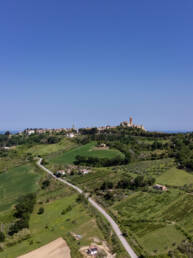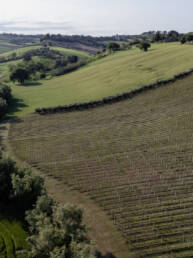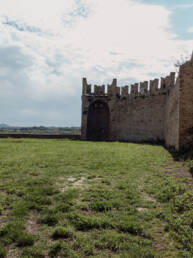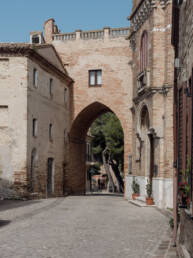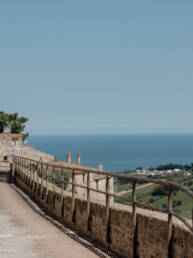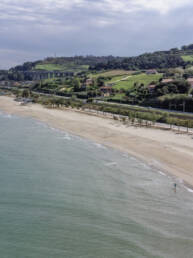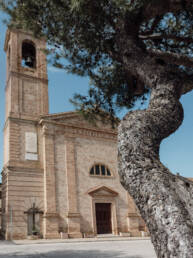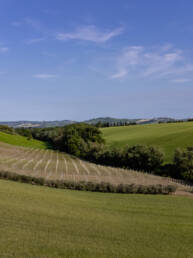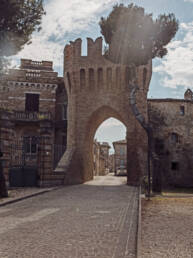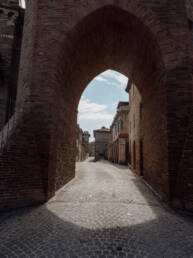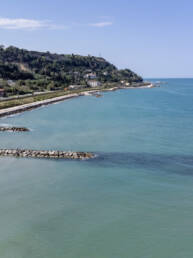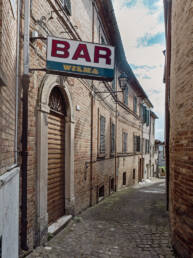VALDASO
Where is the nectarof poets harvested?
On the day of the harvest, in Via Valdaso di Campofilone, there is a great deal of excitement. At number 49, dozens of tractors with trailers overflowing with succulent grapes, the best grapes harvested in the local vineyards stand out from the transport tanks, the firmest and most full-bodied berries are displayed in full view to catch the watchful eye of Mario Di Ruscio, the Benemerito della Vitivinicoltura Italiana.
We are in the valley of the Aso River, the ideal climatic cradle for growing a good wine, where the olfactory sensations of the hilly vegetation meet the scent of the sea breeze: welcome to Campofilone, the hometown of the “Cantina dei Poeti”.
Immersed in a lush green, Campofilone gradually descends towards the coast to blend in with the golden sand of the coastal area.
This typical village in the Fermo area has very ancient origins: its roots go back to the Piceno period between the 7th and 6th centuries BC. C. to which the first settlements date back.
In the Republican era (3rd century BC) it became an important centre of Roman expansion. The Roman presence, in fact, is testified not only by the ancient coastal consular road, but also by significant archaeological finds of water cisterns, baths, granaries, necropolises and other findings related to oil and wine production.
Campofilone arose as the residence of Benedictine monks, hence the ancient Latin name Campusphoeudonus, meaning that the inhabitants of Campofilone granted the monks the fief where the ancient abbey stands.
Others suppose that the name Campofilone derives from the Latin name Campus Fullonum, that is, the laundry field where the cloaks and tunics of the legionaries of Rome and other garments of the time were coloured.
Campofilone
What is there to visit in Campofilone?
Porta Marina, which, together with Porta Sole and Porta da Bora, formed the third access route to Campofilone’s ancient medieval castle, protected within solid walls, still visible today.
The Abbey of San Bartolomeo, the patron saint of Campofilone, a Benedictine abbey built during the Middle Ages presumably on the remains of a Roman villa or pagan temple.
Orto Abbaziale, a garden framed by the ancient medieval fortification, with a privileged view of the marvellous landscape of the Marche countryside set in the enchanting scenery of the Sibillini Mountains.
The Archaeological and Liturgical Museum, where you can admire a collection of vestments, liturgical apparatus and archaeological finds from the Picenian and Roman ages.
Church of San Patrizio, erected in the 1500s, inside you can admire an altarpiece depicting the Madonna with Child, St. Bartholomew, St. Patrick and St. Joseph, dated to the 18th century, by the painter Luigi Fontana and his student Nicola Achilli.
Church of Santa Maria D’Intignano whose foundations belonged to a Roman-era villa.
Marina di Campofilone, a beach of fine sand mixed with gravel, washed by a water gently sloping out to sea.

